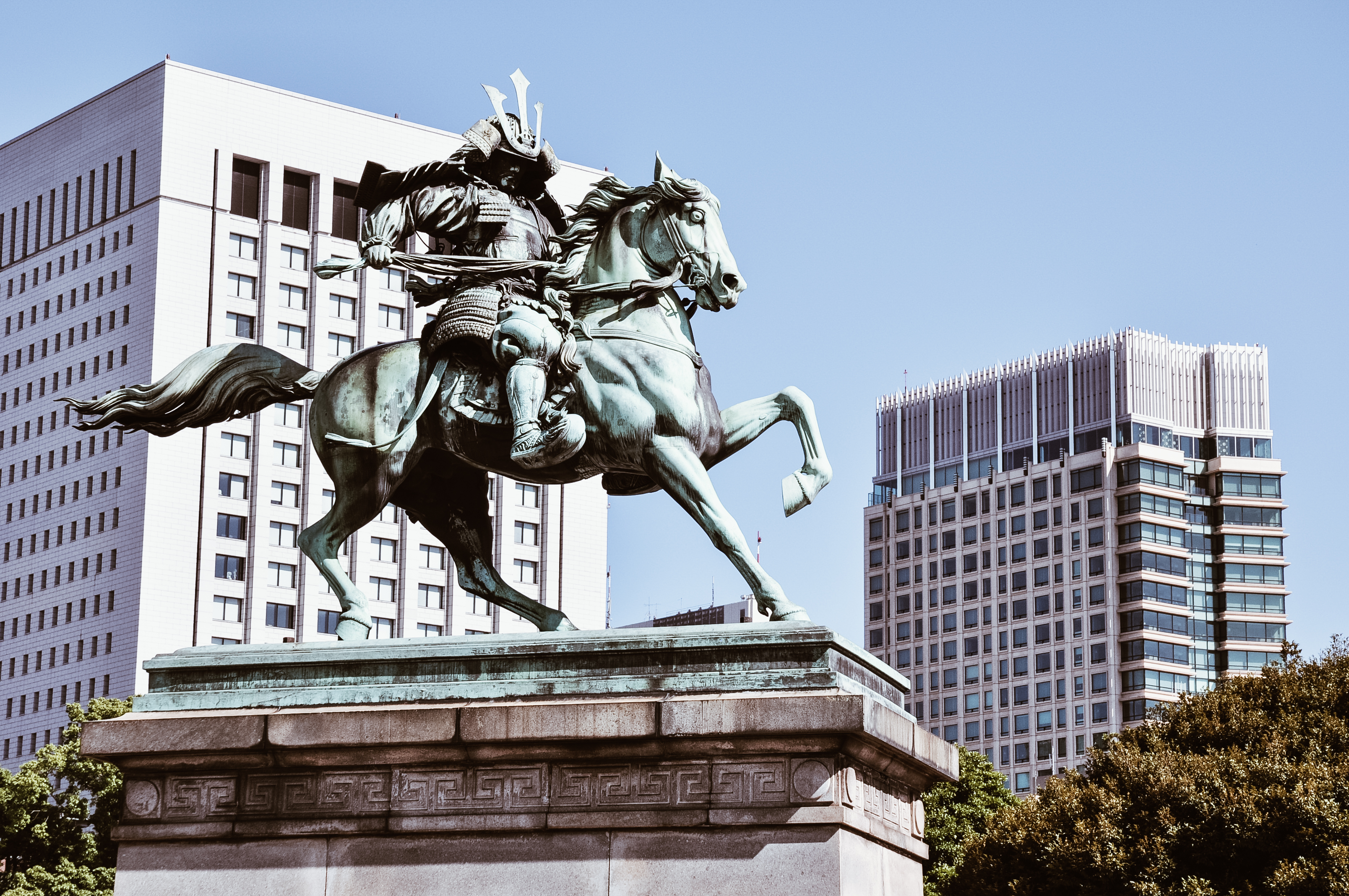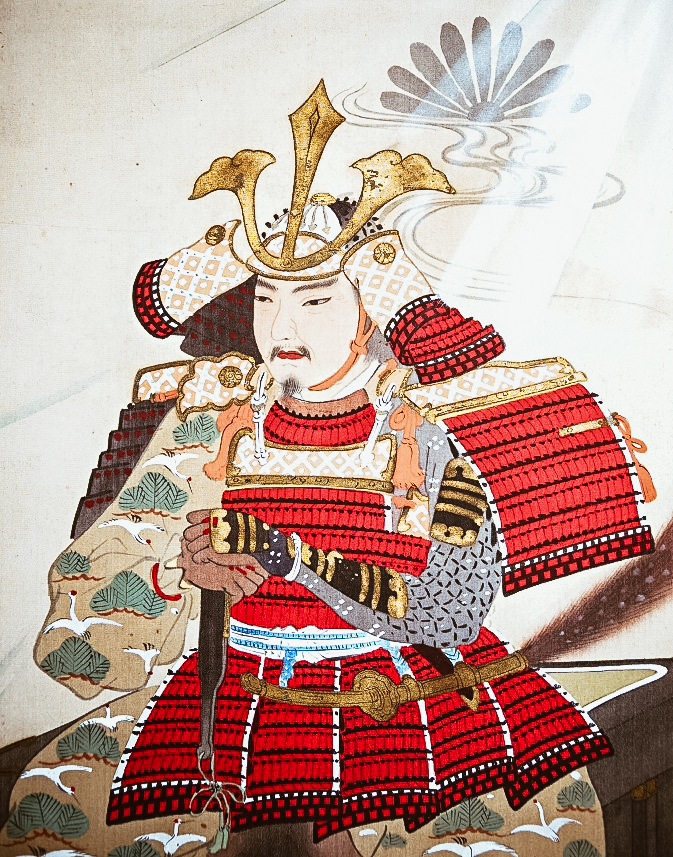Japan History: Kusunoki Masashige
Kusunoki Masashige, (1294 – 4 July 1336) was born in Minato-gawa, province of Settsu, and was a 14th century samurai who fought for the Emperor Go-Daigo in the Genkō war.

photo credit: ninja.fandom.com
Much of his early education took place in the Kanshin-ji temple in Kawachinagano, in the south of Osaka, where he later organized major restoration work.
Legend has it that the emperor Go-Daigo had a dream in which he was taking refuge under a camphor tree (the “kusunoki”). This dream brought him to the surname of the warrior who would support him. Indeed, in 1331 Kusunoki joined the emperor Go-Daigo in a revolt to wrest government power from the shogunate, the military dictatorship that had dominated Japan since 1192. Although numerically stronger shogunate troops captured the emperor, Kusunoki fled continuing to use guerrilla tactics.
The capture of Kusunoki near Nara in 1332 proved to be a serious threat to the government. The shogun then concentrated all his forces against Kusunoki. In one of the most famous battles in Japanese history, Kusunoki successfully defended the fortress of Chihaya against the upper shogunal forces.

photo credit: davtov2000.blogspot.com
From 1333 to 1335
In 1333, Go-Daigo rewarded Masashige with the governorate of the province of Settsu and the province of Kawachi and promoted him to the fifth degree. Subsequently, he received the appointment on the Records Office and Settlement Board. However, one of the loyalist generals, Ashikaga Takauji, betrayed Go-Daigo and led an army against Kusunoki. Takauji took possession of Kyoto, but only temporarily before Nitta Yoshisada and Masashige forced Takauji to flee. In 1336 Takauji was again a threat to Kyoto.
During the short period following the imperial rule, Kusunoki was governor of the central Japanese provinces of Settsu. The real power in the countryside, however, continued to be held by the great hereditary lords, Ashikaga Takauji and Nitta Yoshisada. The latter openly challenged themselves to obtain the loyalty of minor feudal leaders.
Kusunoki suggested to the Emperor to take refuge on the sacred Mount Hiei and allow Takauji to take Kyoto. This is to allow him to descend from the mountain and, with the help of the monks of Mount Hiei, trap Takauji.
Go-Daigo was not willing to leave the capital and insisted that Kusunoki meet Takauji’s forces on the field. Kusunoki, in what would later be seen as the last act of samurai loyalty, accepted obediently. The battle, which took place in Minatogawa, in present-day Chūō-ku, Kobe, was a tactical disaster. There are two reports of the proposal made by Kusunoki Masashige to the emperor Go-Daigo, the Taiheiki and the Baisho Ron, entbe ingorati. One was that they would group together and attack from two sides, the other was that they would take General Takauji back on their side.
Kusunoki’s army was only 50 of the 700 knights. According to legend, the last words of his brother Masasue were Shichisei Hōkoku! (“I wish I had seven lives to give to my emperor!”) Obviously Kusunoki Masashige agreed.
At his death, his head was sent to Kanshin-ji and buried in a tomb known as Kubi-zuka.
Eboshigata Castle and Ishibotoke Castle were both built along the route of the Koya Kaido, a famous pilgrimage route that stretches between Kyoto and Koyasan. Designed not only to protect the path from bandits, these were also an important source of income as travelers were forced to pay a toll.
From 1335 to the Meiji restoration
In 1335 Go-Daigo sided with Nitta Yoshisada against Ashikaga Takauji. As head of the imperial forces, Kusunoki defeated Takauji’s troops in January 1336 and forced him to flee the capital. A few months later, however, Takauji returned to the head of a large army. Kusunoki suggested temporarily withdrawing so he could fight Takauji’s forces at a point where the terrain was more favorable. The emperor insisted that Kusunoki meet enemy forces before occupying the capital. In the final battle on the Minato River, near the modern Kobe, Kusunoki fought bravely for many hours. His troops were finally overwhelmed and committed suicide rather than face capture.
His son, Kusunoki Masatsura, served as the emperor’s successor, 12-year-old Go-Murakami, in a relationship of mutual trust that reflected the figure of his father Kusunoki and kept the flame of loyal resistance alive.
After the imperial restoration in 1868, a splendid sanctuary was erected on the site of Kusunoki’s death. His loyalty to the emperor and his being one of the greatest military strategists in Japanese history, made him a legendary figure. He also received the highest decoration from the Japanese Meiji government in 1880.

photo credit: wikipedia.org
Legend
After the introduction of Neoconfucianism as a state philosophy by the Tokugawa shogunate, Kusunoki Masashige was declared with the emperor Go-Daigo forerunner of the synocentric absolutists. During the Edo period, scholars and samurai who were influenced by neoconfucian theories created the legend of Kusunoki. They consecrated him patriotic hero, with the name of Nankō or Dai-Nankō, incarnation of loyalty, courage and devotion to the Emperor. Kusunoki later became a sort of patron saint of the WWII suicide bombers. His spiritual heirs were those who sacrificed their lives for the emperor.
Share this:
- Click to share on Facebook (Opens in new window)
- Click to share on Twitter (Opens in new window)
- Click to share on Tumblr (Opens in new window)
- Click to share on Pinterest (Opens in new window)
- Click to share on Telegram (Opens in new window)
- Click to share on WhatsApp (Opens in new window)
- Click to share on Reddit (Opens in new window)
- Click to print (Opens in new window)






